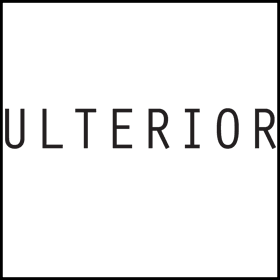2018
-
Podcast Interview with Robert Buck | Image Culture
June 05, 2018
-
Meet Robert Beck/Robert Buck | WhiteHot Magazine
May 03, 2018
-
The Rich History of Video Art from 1973 to Today | Hyperallergic
March 28, 2018
-
A Conversation with Artist Robert Buck | CUNY TV Digitial Series: "Twilight Talks"
March 15, 2018
-
From a Cy Twombly Celebration to Imaginary Cowboys: 39 Must-See Gallery Shows in New York This March | ArtNet News
March 01, 2018
2016
-
Artist Robert Buck Addresses Gun Violence Through Beauty | The Columbus Dispatch
June 05, 2016
-
Picturing America in the Selfie Age at the Whitney | The New York Times
April 28, 2016
2014
-
Sleuthing the Mind | The Beautiful Brain
November 09, 2014
2013
-
The Opening: Robert Buck / Robert Beck | Rennie Collection
March 21, 2013
2012
-
Robert Buck at CRG | Art In America
May 17, 2012
-
500 WORDS | Artfourm
February 07, 2012
-
New American Paintings | January 26, 2012
January 25, 2012
2010
-
Lower East Side Tale | Refracted Nine Times
July 09, 2010
-
Art in Review | New York Times
May 06, 2010
2008
-
Art Review | Time Out New York
July 17, 2008
-
Robert Beck at CRG | Art in America
March 01, 2008
-
Robert Beck, CRG Gallery | Artfourm
February 01, 2008
2007
-
Signing “I” | ARTSLANT
November 16, 2007
-
Robert Beck | Artforum
November 01, 2007
-
Robert Beck dust | Artforum
November 01, 2007
2005
-
Youth Movement | NY Sun
August 11, 2005
2004
-
Robert Beck, CRG Gallery | Parachute
August 01, 2004
-
Robert Beck | Mutual Art
April 01, 2004
-
Robert Beck | Time Out New York
February 19, 2004
2003
-
ARTS / ART & DESIGN | New York Times
May 16, 2003
-
SHOT ON SIGHT: A conversation with Robert Beck | Swingset
March 01, 2003
2002
-
Robert Beck | Art on Paper
May 01, 2002
-
The Great Divide | The Village Voice
March 04, 2002
-
The Armory Show, Grown Up and in Love With Color | New York Times
February 22, 2002
2001
2000
-
Review of Exhibitions: Robert Beck at CRG | Art in America
September 01, 2000
1998
-
Robert Beck | Artforum
March 01, 1998
1997
-
Robert Beck | New York Times
October 17, 1997
1996
-
"Sugar Mountain" | New York Times
April 26, 1996
1995
-
Robert Beck | Artforum
February 01, 1995
About the Site
Daniel Chapman, a web developer, and I broke ground on the site June 8, 2015. My desire was to create a comprehensive space to house my art and corresponding activities, which include writing, teaching, screenings and my work in the field of contemporary psychoanalysis. Images of works from, and installation views of, exhibitions in most cases represent a portion of what was shown. The site is updated on an ongoing basis.
Site technical specifications are as follows: for back-end development, we used Rails with a Postgres database with rspec for testing; AWS and Heroku for hosting of the files and site. For the front-end work, traditional javascript and jQuery work, with Sass for design.
I’m grateful to Daniel for his expertise, creativity and commitment. For more information about Daniel and his work, click here.
- Robert Buck Studio
- 214-216 East 2nd Street #6W
- New York, NY 10009
- 917-584-4077
- robert.buck69@verizon.net
Andy Warhol's Grave
Ballroom Marfa
Big Bend National Park
Big Bend Ranch State Park
Cormac McCarthy
David Lynch Foundation
Geocam
International Dark-Sky Association
Lacan TV
Lacanian Compass
Recreation
Robert Bresson: Notes on Cinematography
Screen Slate
Texas Archive of the Moving Image
Texas Virtual Border Watch
The Chinati Foundation
The Lacanian Review
Transcendental Meditation
U.S. Geological Survey
World Association of Psychoanalysis
Website designed and developed by Robert Buck and Daniel Chapman
For more information click here.
Biography



.png)
